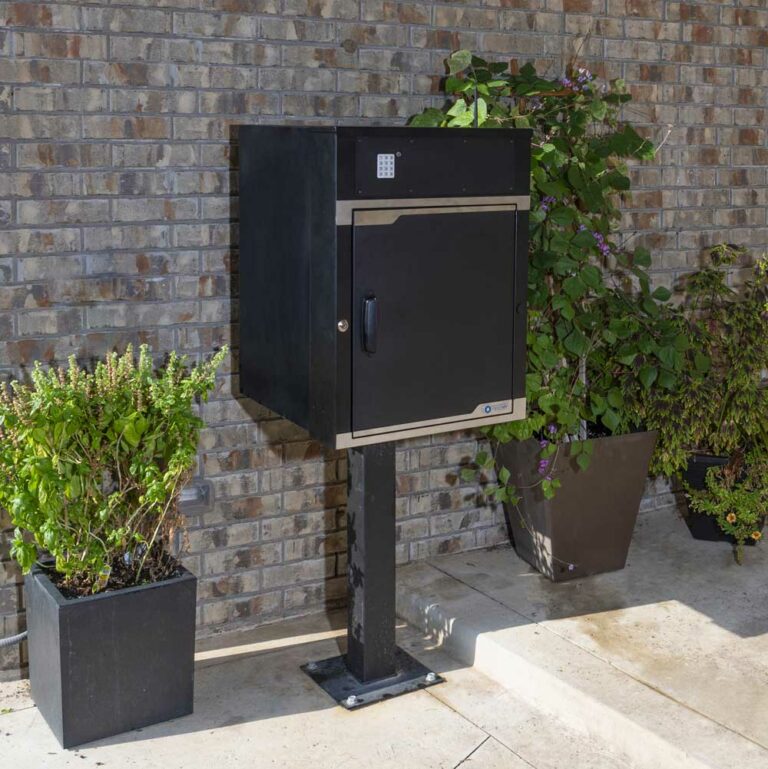As we progress through 2025, the smart home market continues its explosive growth trajectory, presenting unprecedented opportunities for forward-thinking home builders. No longer a luxury or novelty, smart home integration has become an expectation for modern homebuyers seeking connected, efficient, and secure living environments.
According to Today’s Homeowner, the global smart home market was valued at $127.67 billion in 2024 and is projected to reach an astonishing $1.4 trillion by 2034, representing a compound annual growth rate (CAGR) of 27.1%. For home builders, this growth signifies not just a passing trend but a fundamental shift in how homes are designed, built, and marketed.
This comprehensive guide explores how home builders can position themselves at the forefront of this revolution by incorporating smart home technology into their new construction projects.
Why Smart Home Integration Matters for Home Builders in 2025
The integration of smart home technology into new construction offers multiple advantages for builders:
- Enhanced Market Differentiation: In a competitive housing market, smart home features provide meaningful differentiation that can set your properties apart.
- Increased Property Valuation: Smart home technology can increase a property’s resale value by up to 5%, according to research cited by Today’s Homeowner.
- Alignment with Consumer Expectations: Approximately 74% of Americans are interested in owning smart home devices, with 81% of knowledgeable consumers preferring to purchase homes already equipped with smart technology.
- Energy Efficiency Credentials: Smart home systems contribute to sustainability goals and energy efficiency standards, increasingly important to environmentally conscious buyers and aligned with U.S. Department of Energy recommendations.
- Future-Proofing New Builds: Homes pre-wired and designed for smart technology are better positioned for technological advances in the coming years.
Key Smart Home Trends for Builders in 2025
1. Centralized Smart Home Management Systems
The concept of a central hub for managing all smart devices has gained significant traction. Popular options include the Amazon Echo Dot, which dominates the market with 69% of smart speaker owners choosing it as their central control point, and the Google Nest Hub, known for its seamless integration with Google Assistant.
Home builders should consider:
- Pre-wiring homes for centralized control systems
- Creating dedicated spaces for smart home hubs
- Offering packages that include popular central management devices
- Designing smart home showrooms where buyers can experience these systems firsthand
2. AI-Powered Automation and Personalization
According to Eco Smart Home Pros, artificial intelligence is making smart home systems more intuitive in 2025, with voice assistants gaining enhanced capabilities to understand context, predict user needs, and seamlessly integrate with home automation systems.
Implementation strategies for builders:
- Partner with AI technology providers like Parcel Safe to offer advanced systems
- Design homes with acoustics that enhance voice assistant functionality
- Create demonstration units showcasing AI-driven scenarios like morning routines or security responses
- Include smart home automation packages as standard or premium upgrade options that align with Consumer Technology Association standards
3. Energy Management and Sustainability
With rising energy costs and growing focus on sustainability, 2025 is seeing a surge in energy-efficient smart home technology. Smart thermostats, energy-monitoring systems, and automated window treatments play key roles in reducing energy consumption according to the U.S. Environmental Protection Agency.
Builders can capitalize by:
- Installing energy management systems as standard features
- Offering solar integration with smart monitoring capabilities
- Implementing smart HVAC systems with zoning capabilities
- Showcasing potential energy savings in marketing materials
4. Enhanced Security Features
Security remains a top priority for homeowners in 2025, with advancements including AI-powered surveillance cameras, facial recognition doorbells, and biometric smart locks transforming home security according to the National Association of Home Builders.
Recommended builder approaches:
- Build a space for Parcel Safe’s Defender line of safes
- Pre-wire homes for comprehensive security systems
- Include basic smart security components in base builds
- Offer upgraded security packages with advanced features
- Design entryways and property boundaries with security technology in mind
- Showcase security integration options in model homes
5. Seamless Indoor-Outdoor Integration
As lifestyles increasingly blend indoor and outdoor living, well-designed patios, covered terraces, and flexible backyard areas are becoming essential spaces that benefit from smart technology integration according to research from Snap.Build.
Implementation ideas:
- Extend network coverage to outdoor spaces
- Install weather-resistant smart lighting and audio systems
- Include smart irrigation systems in landscaping packages as recommended by the Irrigation Association
- Design outdoor entertainment spaces with integrated technology
- Create indoor-outdoor smart home experiences in model homes
The Rise of the Smart Home Manager
Perhaps the most significant development for builders to consider is the emergence of comprehensive smart home management systems. These platforms serve as the brain of the smart home, connecting disparate devices and systems into a cohesive, user-friendly experience that aligns with research from Deloitte on smart home trends.
Looking toward 2025, the global smart device market is dominated by specific categories including smart lighting systems (26%), security cameras (23%), smart speakers (19%), and smart TVs (14%) according to market statistics. A centralized management platform allows homeowners to control all of these elements from a single interface.
Key benefits of smart home managers for builders include:
- Simplified User Experience: By offering a consolidated control system, builders can make advanced technology more accessible to all homebuyers.
- Reduced Integration Challenges: A central management system helps avoid the compatibility issues that can arise with disparate smart devices.
- Enhanced Value Proposition: Homes with integrated management systems command premium prices compared to those with standalone smart devices.
- Ongoing Service Opportunities: Some builders are partnering with technology providers to offer subscription services for smart home management, creating recurring revenue streams.
- Reduced Customer Support Issues: Unified systems typically result in fewer technical problems compared to pieced-together solutions.
Implementation Strategies for Home Builders
1. Develop Technology Partnerships
The smart home market report from Grand View Research indicates that a key driving factor of market growth is the widespread adoption of Internet of Things (IoT) devices, with the number worldwide forecasted to almost double from 15.1 billion in 2020 to around 29 billion by 2030.
Successful builders are forming strategic alliances with:
- Parcel Safe Systems for package theft prevention
- Major technology providers (Amazon, Google, Apple)
- Specialized smart home integrators
- Security companies with smart home offerings
- Energy management system providers
- Local technology installation experts
2. Create Tiered Smart Home Packages
Offering different levels of smart home integration allows builders to appeal to various price points and technological comfort levels as recommended by the Consumer Technology Association:
- Essential Package: Basic smart home infrastructure, WiFi optimization, and fundamental devices following TechHive recommendations
- Connected Package: More comprehensive device integration with enhanced automation
- Premium Package: Full-scale smart home implementation with advanced features and premium devices
- Custom Solutions: Tailored technology integration for specific client needs
3. Design Smart Home-Ready Infrastructure
Modern homeowners are increasingly looking for homes that support both physical and mental well-being through technology integration, particularly as homes continue to serve multiple functions according to Hogan Homes.
Essential infrastructure elements include:
- Robust electrical planning for device placement
- Structured wiring with future expansion capability following CEDIA standards
- Enhanced WiFi design with multiple access points
- Dedicated wiring closets or technology spaces
- Backup power solutions for critical smart systems
5. Develop Post-Sale Support Solutions
The smart home market is witnessing a surge in AI-powered devices that enhance automation and user experience across products like cameras, smart lighting, streaming devices, and appliances. These advanced systems may require ongoing support.
Consider offering:
- Technology orientation sessions for new homeowners
- Basic troubleshooting guides and resources
- Maintenance service packages
- Upgrade paths as technology evolves
- Partnerships with local support providers
Market Positioning and Marketing Strategies
Highlight the ROI of Smart Home Technology
American homeowners have saved around $98 per month after using smart home devices, resulting in annual savings of approximately $1,180. Emphasize these financial benefits in your marketing materials.
Effective messaging points include:
- Energy cost reductions through smart thermostats and lighting
- Insurance premium discounts for security features
- Long-term property value appreciation
- Potential tax incentives for energy-efficient systems
- Time savings through automation
Target Demographic-Specific Benefits
Household penetration of smart home technology is projected to reach 77.6% in 2025 and is expected to hit 92.5% by 2029 according to Statista. However, different demographics prioritize different aspects of smart home technology:
- Millennials and Gen Z: Convenience, tech integration, and mobile control
- Families: Security, monitoring, and time-saving automation
- Older Adults: Health monitoring, accessibility, and ease of use
- Luxury Buyers: Cutting-edge features and seamless aesthetics
- Environmentally Conscious: Energy efficiency and resource management
Create Educational Content
Position your company as a thought leader in smart home integration:
- Blog posts explaining smart home benefits
- Video tours of smart home features
- Webinars for potential buyers following Houzz best practices
- Partnership announcements with technology companies
- Case studies showcasing successful implementations
Case Study: Success in Smart Home Integration
Horizon Homes, a mid-sized builder in the Pacific Northwest, implemented a comprehensive smart home strategy in 2024, resulting in:
- 22% faster sales cycles for smart home-equipped properties
- 17% higher average selling prices compared to comparable non-smart properties
- 93% positive feedback from homebuyers regarding technology features
- Multiple industry awards for innovation
- Successful partnerships with three major technology providers
The key to their success was a phased implementation approach, starting with basic infrastructure and expanding to more sophisticated systems as their team gained expertise.
The Future of Smart Homes Beyond 2025
By 2025, approximately 30% of real estate deals are expected to incorporate blockchain technology, making transactions faster, more secure, and building trust with buyers according to Rentastic. This is just one example of how technology will continue to transform the home building industry.
Other emerging trends to watch include:
- Biometric Integration: More sophisticated personal identification for security and personalization
- Health-Focused Technology: Systems that monitor air quality, water purity, and even health metrics as highlighted by the Mayo Clinic
- Advanced Materials Integration: Smart surfaces and materials that change properties based on conditions
- Expanded AI Capabilities: More predictive and adaptive home systems
- Immersive Virtual/Augmented Reality: Enhanced home interfaces beyond screens and voicein-depth/how-smart-homes-are-improving-health-care/art-20390305)
- Advanced Materials Integration: Smart surfaces and materials that change properties based on conditions
- Expanded AI Capabilities: More predictive and adaptive home systems
- Immersive Virtual/Augmented Reality: Enhanced home interfaces beyond screens and voice
The Competitive Advantage of Smart Home Integration
For home builders in 2025, smart home technology represents both a challenge and an opportunity. Those who successfully incorporate these technologies into their building practices gain significant competitive advantages in the marketplace according to the National Association of Home Builders.
By developing expertise in smart home integration now, builders can position themselves at the forefront of this rapidly evolving industry sector. The initial investment in training, partnerships, and implementation will yield substantial returns through enhanced property values, market differentiation, and satisfied customers.
Ready to elevate your building projects with smart home technology? Contact our consulting team to develop a customized strategy for your business, or explore our portfolio of smart home projects to see real-world implementations.


